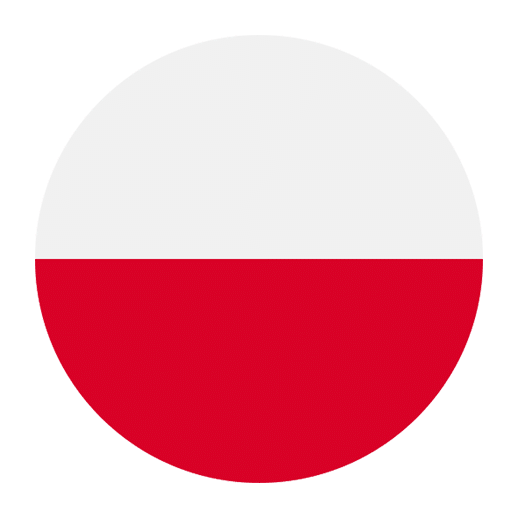Poland, a country rich in history and tradition, boasts a vibrant cultural tapestry that is deeply interwoven with its language. For language learners, understanding the significance of Polish holidays offers an invaluable insight into both the linguistic nuances and cultural heritage of Poland. By immersing oneself in the celebrations and traditions of Polish holidays, learners can gain a more profound appreciation of the language and the people who speak it.
Polish holidays are a reflection of the nation’s history, religious beliefs, and cultural values. They provide a unique opportunity to observe how language is used in various contexts, from formal ceremonies to casual gatherings. By exploring these holidays, language learners can enhance their vocabulary, improve their comprehension skills, and develop a more nuanced understanding of Polish culture.
Major Polish Holidays and Their Cultural Significance
Poland’s calendar is dotted with numerous holidays, each with its own set of customs, traditions, and linguistic expressions. Some of the most significant holidays include Christmas (Boże Narodzenie), Easter (Wielkanoc), and All Saints’ Day (Dzień Wszystkich Świętych). These holidays not only highlight Poland’s strong Christian heritage but also showcase the unique ways in which the Polish people celebrate and communicate during these special times.
Christmas (Boże Narodzenie)
Christmas is perhaps the most important holiday in Poland, celebrated with great enthusiasm and reverence. The festivities begin on December 24th with Wigilia, or Christmas Eve, which is considered the most significant day of the holiday season. This day is marked by a special dinner that includes twelve meatless dishes, symbolizing the twelve apostles. Traditional dishes include pierogi, barszcz (beet soup), and carp.
Language learners will find a wealth of vocabulary associated with Christmas. Words such as “choinka” (Christmas tree), “prezenty” (presents), and “kolędy” (carols) are commonly used. Additionally, Christmas carols, or kolędy, are an essential part of the celebration. Learning and singing these carols can help learners improve their pronunciation and rhythm in Polish.
One unique tradition is the sharing of the opłatek, a wafer that is broken and shared among family members while exchanging wishes for the coming year. This tradition provides an excellent opportunity for learners to practice expressing well-wishes in Polish, such as “Wesołych Świąt” (Merry Christmas) and “Szczęśliwego Nowego Roku” (Happy New Year).
Easter (Wielkanoc)
Easter is another major holiday in Poland, celebrated with a series of unique customs and rituals. The holiday begins with Palm Sunday (Niedziela Palmowa), where people attend church with intricately decorated palm branches. Holy Saturday (Wielka Sobota) is marked by the tradition of Święconka, the blessing of Easter baskets filled with symbolic foods such as eggs, bread, and salt.
Easter Sunday (Niedziela Wielkanocna) is a day of joy and feasting, with families gathering for a special meal that often includes żurek (sour rye soup) and white sausage. The day after Easter, known as Śmigus-Dyngus or Wet Monday, is a playful tradition where people splash water on each other, symbolizing the cleansing of sins and the arrival of spring.
Language learners can expand their vocabulary with words related to Easter, such as “pisanki” (decorated eggs), “koszyczek” (basket), and “zmartwychwstanie” (resurrection). Participating in or observing these traditions provides context for understanding how certain words and phrases are used in practice.
All Saints’ Day (Dzień Wszystkich Świętych)
All Saints’ Day, observed on November 1st, is a solemn holiday dedicated to remembering and honoring the deceased. On this day, Poles visit cemeteries to clean and decorate the graves of their loved ones with flowers and candles. The sight of cemeteries aglow with thousands of flickering candles is both beautiful and poignant.
This holiday offers language learners the chance to explore vocabulary related to remembrance and mourning, such as “grób” (grave), “znicz” (candle), and “kwiaty” (flowers). Additionally, understanding the cultural significance of this day can provide insight into the Polish people’s attitudes towards death and the afterlife.
Traditional Polish Festivals and Customs
In addition to the major holidays, Poland is home to numerous festivals and customs that reflect the country’s rich cultural heritage. These events often feature traditional music, dance, and cuisine, providing a vibrant context for language learning.
Wianki and Midsummer Night (Noc Świętojańska)
Wianki, celebrated on Midsummer Night (June 23-24), is an ancient Slavic festival that marks the summer solstice. The name “Wianki” refers to the wreaths made of flowers and herbs that young women wear and later float on rivers. The festival includes bonfires, singing, and dancing, creating a lively and festive atmosphere.
Participating in Wianki offers language learners the opportunity to engage with words related to nature and celebration, such as “wianki” (wreaths), “kwiaty” (flowers), and “ognisko” (bonfire). Additionally, learning traditional songs and dances can enhance one’s understanding of Polish rhythm and intonation.
Dożynki (Harvest Festival)
Dożynki, or the Harvest Festival, is a traditional celebration held at the end of the harvest season, typically in late August or early September. This festival is a time to give thanks for a bountiful harvest and to honor the hard work of farmers. The festivities often include parades, folk music, dancing, and the presentation of a symbolic harvest wreath.
Language learners can benefit from learning vocabulary related to agriculture and celebration, such as “żniwa” (harvest), “wieniec” (wreath), and “plony” (crops). Participating in or observing Dożynki can provide a deeper understanding of the rural traditions that have shaped Polish culture.
Andrzejki (St. Andrew’s Day)
Andrzejki, celebrated on the night of November 29th, is a festive occasion dedicated to fortune-telling and divination. This tradition is particularly popular among young people, who gather to perform various fortune-telling rituals, such as pouring hot wax into cold water to interpret the shapes that form.
This holiday offers language learners a chance to explore vocabulary related to fortune-telling and superstition, such as “wróżby” (fortunes), “andrzejki” (St. Andrew’s Eve), and “przepowiednia” (prediction). Engaging in these activities can provide a fun and interactive way to practice Polish.
Language Learning Through Cultural Immersion
Understanding the significance of Polish holidays and traditions is an essential aspect of language learning. By immersing oneself in these cultural events, learners can gain a deeper appreciation of the language and its context. Here are some practical ways to incorporate cultural immersion into language learning:
1. Participate in Local Celebrations
If you have the opportunity to visit Poland or live in a Polish community, participating in local celebrations is one of the best ways to immerse yourself in the culture. Attend holiday events, join in traditional activities, and interact with native speakers to practice your language skills in real-life situations.
2. Engage with Polish Media
Watching Polish films, listening to Polish music, and reading Polish literature can provide valuable insights into the language and culture. Pay attention to how holidays and traditions are portrayed in these media, and take note of any new vocabulary or expressions.
3. Cook Traditional Polish Dishes
Preparing traditional Polish dishes is a hands-on way to engage with the culture. Look up recipes for holiday-specific foods, such as pierogi for Christmas or żurek for Easter, and practice reading and following the instructions in Polish.
4. Learn Traditional Songs and Dances
Music and dance are integral parts of many Polish celebrations. Learning traditional songs and dances can help improve your pronunciation, rhythm, and understanding of cultural expressions. Join a local Polish dance group or find online tutorials to get started.
5. Connect with Native Speakers
Building relationships with native Polish speakers can provide valuable opportunities for language practice and cultural exchange. Join language exchange groups, participate in online forums, or attend cultural events to connect with others who share your interest in Polish language and culture.
The Role of Language in Preserving Cultural Identity
Language is a powerful tool for preserving and transmitting cultural identity. In Poland, the use of the Polish language during holidays and festivals plays a crucial role in maintaining a sense of national pride and continuity. For language learners, understanding this connection between language and culture is essential for developing a deeper appreciation of both.
During holidays and festivals, the Polish language is used to express a wide range of emotions, from joy and gratitude to reverence and remembrance. The specific vocabulary, phrases, and expressions associated with these events provide insight into the values and beliefs of the Polish people. By learning these linguistic elements, language learners can gain a more holistic understanding of the culture.
Additionally, participating in cultural traditions can help language learners develop a sense of belonging and connection to the Polish community. Whether through singing carols, sharing a meal, or lighting a candle in remembrance, these cultural practices provide meaningful contexts for language use and offer a sense of continuity with the past.
Conclusion
The significance of Polish holidays in language and culture cannot be overstated. These celebrations offer a rich tapestry of traditions, customs, and linguistic expressions that provide valuable insights into the Polish way of life. For language learners, immersing oneself in these cultural events is an essential aspect of developing a deeper appreciation and understanding of the Polish language.
By participating in local celebrations, engaging with Polish media, cooking traditional dishes, learning songs and dances, and connecting with native speakers, learners can enhance their language skills and gain a more profound appreciation of Polish culture. Ultimately, understanding the significance of Polish holidays enriches the language learning experience and fosters a deeper connection to the vibrant cultural heritage of Poland.

